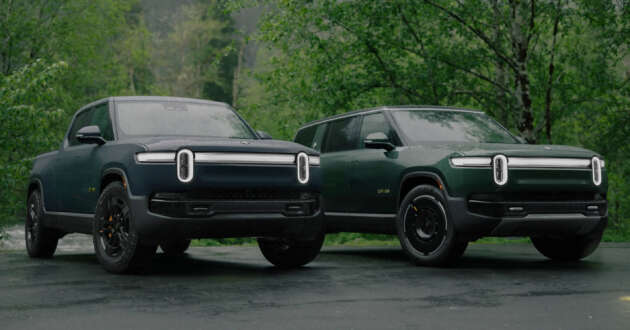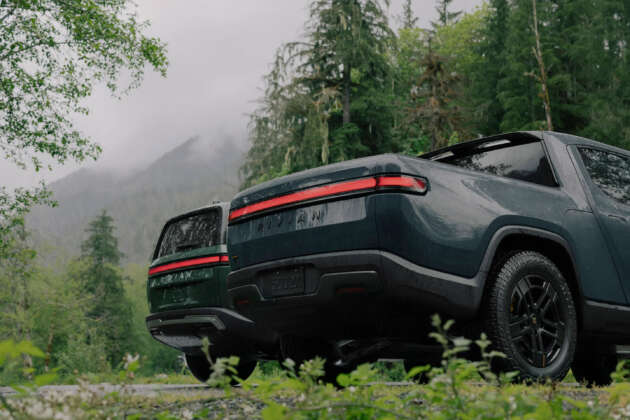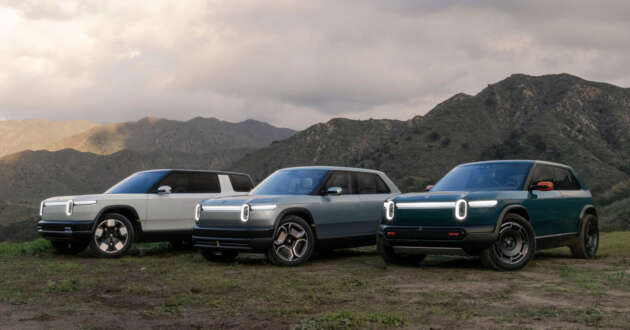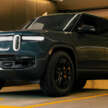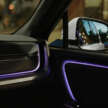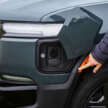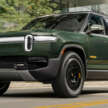The Rivian R1T pick-up truck and R1S SUV have been on sale for a relatively short time but their maker has seen it fit to give both a mid-cycle refresh. While the changes don’t appear to be major when viewed from the outside, the company has done plenty to overhaul the guts of its two offerings, so much so that they are being referred to as “second-generation” models.
One of the biggest changes to the R1 duo is the adoption of an entirely new “zonal” electrical architecture and compute platform that reduces the number of ECUs from 17 previously to just seven. This increases efficiency while also reducing 2.6 km of wiring from each vehicle, which helps lower production cost.
According to deep dive reports by Jalopnik and The Verge, the autonomous driving, battery management, infotainment and vehicle systems each get their own ECUs, while other vehicle functions are handled by the remaining three ECUs. With fewer ECUs and less wiring, nearly 20 kg of weight was trimmed from the vehicles.
In terms of the powertrain, Rivian previously sourced its drive units from Bosch but switched to its own Enduro drive units, which were first applied on models with a dual-motor setup. The Enduro drive unit, along with an in-house designed inverter and gearbox, plus a supplier-sourced rotor, now makes its way to the all-new R1 platform and provides a substantial performance uplift.
On Quad-Motor variants, the rated outputs are a staggering 1,025 hp (764 kW) and 1,624 Nm of torque, which is an improvement from the previous 835 hp (623 kW) and 1,231 Nm. The redesigned R1T in this configuration will get from 0-96 km/h (0-60 mph) in around 2.5 seconds with Launch Mode enabled to scare most sports cars on the road.
A new Tri-Motor variant has also been added that has one motor at the front and two at the rear, and this setup is rated at 850 hp (625 kW) and 1,495 Nm (0-96 km/h in 2.9 seconds). Dual-Motor variants will also continue to be offered in two versions, with the base option offering 533 hp (397 kW) and 827 Nm (0-96 km/h in 4.5 seconds). Customers can also get a Dual-Motor Performance variant that bumps those figures to 665 hp (496 kW) and 1,124 Nm (0-96 km/h in 3.4 seconds).
Besides the electric motors, Rivian also updated the Large and Max nickel cobalt aluminium (NCA) battery packs with redesigned modules and more efficient packaging, the latter meant to make them easier to manufacture and service.
The Large pack with an energy capacity of 109.4 kWh offers an estimated 531 km (330 miles) of range and comes standard with the Dual-Motor Performance and is optional for the base Dual-Motor. The Max with its 141.5 kWh capacity is expected to provide up to 676 km (420 miles of range) and is available as an option for both Dual-Motor variants but is standard on the Tri-Motor and Quad-Motor.
There will also be an entry-level Standard battery pack, now using lithium iron phosphate (LFP) chemistry and having a lower energy capacity of 92.5 kWh for up to 435 km (270 miles) of range. Despite the upgrade batteries, the R1 models retain their 400V architecture, with Rivian quoting as little as 30 minutes to get from a 10-80% state of charge with a CCS or NACS (using an adapter) DC fast charger.
The R1S in particular benefits from improved suspension systems for better ride quality – a common complaint of the “first generation” – with new air springs, dampers and tuning of its hydraulic anti-roll system.
Another new feature to debut with the R1 models is an in-house developed autonomy system dubbed the Rivian Autonomy Platform. This includes 11 cameras, five radars, Nvidia-powered AI prediction and has a compute module that is 10 times more platform than the previous system.
Rivian also touts 360-degree visibility, eight times the number of camera megapixels and redundant sensors to ensure functionality even in poor weather and light conditions. This system is standard on all vehicles, including features such as camera blind spot monitoring and Highway Assist. Buyers can also upgrade to the premium Rivian Autonomy Platform+ that adds things like Lane Change on Command and Enhanced Highway Assist.
The R1 vehicles also get an enhanced infotainment system with more capable hardware to drive the Epic Games’ Unreal Engine, which enables greater rendering capabilities and a brand-new interface that is more visually appealing.
The update also allows users to use their iPhone, Apple Watch and select Google Pixel devices to unlock and start the vehicle, with digital key sharing also supported if they plan to share with family and friends. A Rivian Premium Audio sound system is available and comes with Dolby Atmos for a more immersive aural experience.
As for the design, both the R1T and R1S maintain their retro-inspired exterior, albeit with a few notable tweaks. First up, the headlamps now come with adaptive matrix LED technology and the turn signals have been repositioned to where the fog lamps used to be – this means the oblong-shaped daytime running lights stay on when the indicators are used.
Elsewhere, the front and rear light bars have ten segments in the lower section that acts as a charge indicator, with each segment representing 10% of the battery’s capacity. This makes it easier for owners to check on the vehicle’s state of charge as opposed to the entire light bar glowing previously.
The light bars also double as an emergency signal by blinking orange in sequence – left to right or vice versa – to warn other road users of an accident or hazard ahead. Other revisions involve the front light bar that gets a subtle redesign to have a 3D look by way of a chamfered lower edge, while the wheel sizes available are 20 and 22 inches – the previous 21-inch designs are gone. Optional aero 22-inch wheels are offered too with discs that help lower the drag coefficient slightly to 0.297.
On the inside, there’s now an optional Dynamic Glass Roof that can be tinted electronically if you prefer to reduce the amount of exterior light coming in. There are also electronic door latches and improved materials, but the general layout of the dashboard remains largely the same.
Pricing for the R1 models remain largely the same before, with the R1T starting at USD69,900 (about RM328k) for the Dual-Motor Standard Pack and going all the way up to USD99,900 (RM469k) for the Tri-Motor Max Pack. The R1S starts at USD75,900 (RM356k) for the same base variant and peaks at USD105,900 (RM497k) for the Tri-Motor Max Pack.
Rivian will announce the prices of the Quad-Motor Max Pack variants later on. Deliveries of the R1S are set to commence from June 7 this year, with the R1T set to follow soon after.
GALLERY: 2025 Rivian R1T facelift
GALLERY: 2025 Rivian R1S facelift
GALLERY: 2025 Rivian R1T and R1S facelifts group shots
Looking to sell your car? Sell it with Carro.

